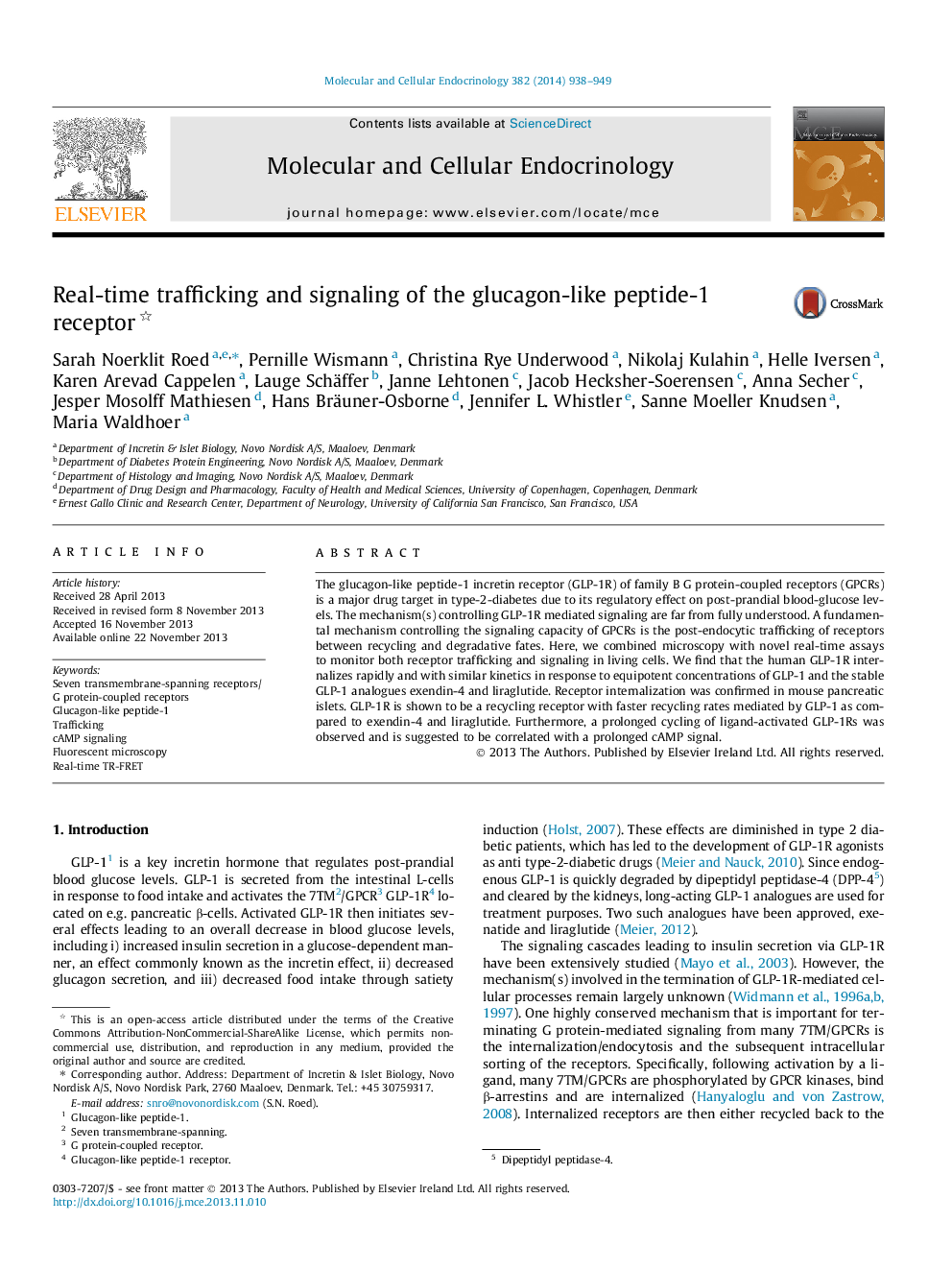| Article ID | Journal | Published Year | Pages | File Type |
|---|---|---|---|---|
| 10956196 | Molecular and Cellular Endocrinology | 2014 | 12 Pages |
Abstract
The glucagon-like peptide-1 incretin receptor (GLP-1R) of family B G protein-coupled receptors (GPCRs) is a major drug target in type-2-diabetes due to its regulatory effect on post-prandial blood-glucose levels. The mechanism(s) controlling GLP-1R mediated signaling are far from fully understood. A fundamental mechanism controlling the signaling capacity of GPCRs is the post-endocytic trafficking of receptors between recycling and degradative fates. Here, we combined microscopy with novel real-time assays to monitor both receptor trafficking and signaling in living cells. We find that the human GLP-1R internalizes rapidly and with similar kinetics in response to equipotent concentrations of GLP-1 and the stable GLP-1 analogues exendin-4 and liraglutide. Receptor internalization was confirmed in mouse pancreatic islets. GLP-1R is shown to be a recycling receptor with faster recycling rates mediated by GLP-1 as compared to exendin-4 and liraglutide. Furthermore, a prolonged cycling of ligand-activated GLP-1Rs was observed and is suggested to be correlated with a prolonged cAMP signal.
Related Topics
Life Sciences
Biochemistry, Genetics and Molecular Biology
Cell Biology
Authors
Sarah Noerklit Roed, Pernille Wismann, Christina Rye Underwood, Nikolaj Kulahin, Helle Iversen, Karen Arevad Cappelen, Lauge Schäffer, Janne Lehtonen, Jacob Hecksher-Soerensen, Anna Secher, Jesper Mosolff Mathiesen, Hans Bräuner-Osborne,
